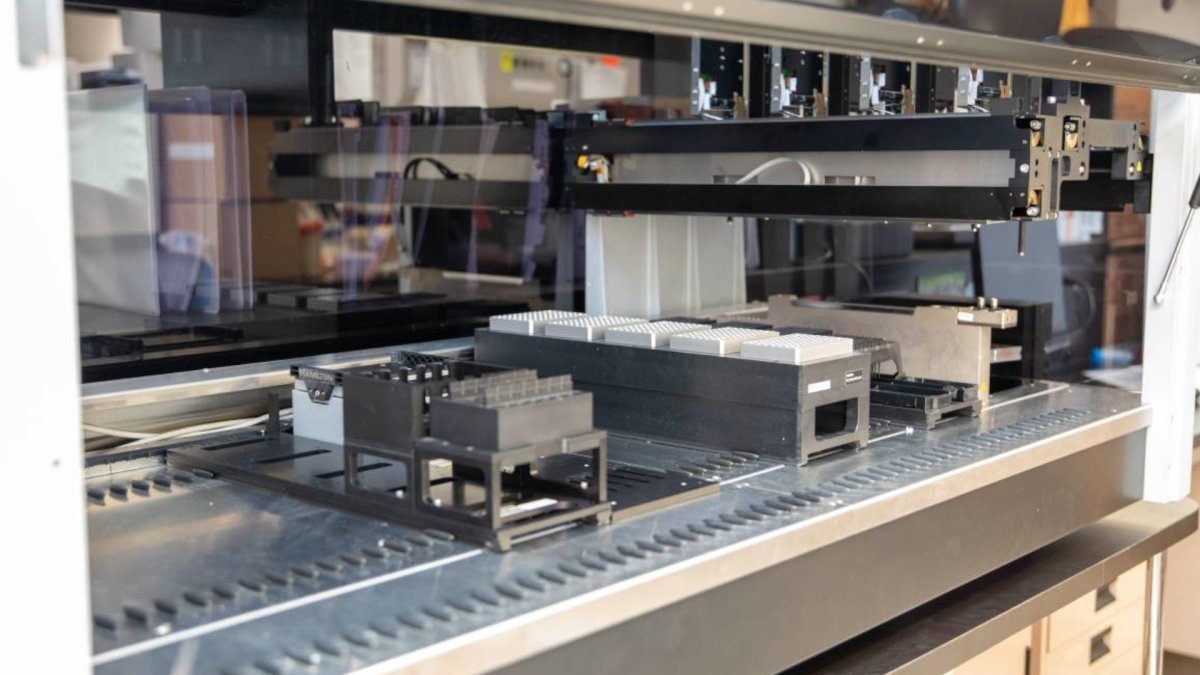A pair of researchers at St. Joseph’s Hamilton Health Care, who want to help Ontario reach its goal of testing 25,000 people for COVID-19 every day, says combining coronavirus test samples could be the way to go.

Dr. Marek Smieja, an infectious disease physician-researcher from St. Joe’s, told Global News that taking multiple test samples from asymptomatic, low-risk subjects and putting them together to make one test sample could significantly increase the province’s capacity for testing.
“In other words, take four samples, put them together in one, call it one test. And as long as it’s negative, you’ve resulted four people,” said Smieja.
“Of course, if it’s positive, then you have to go back to those four individual tubes.”
Premier Doug Ford announced Sunday that anyone in the province can get tested for COVID-19, regardless of whether they have symptoms.
However, the province continues to fall below its daily target of 16,000 tests for May averaging only about 11,000 per day, so far.
Smieja says he shares the premier’s interest in trying to do massive, widespread testing but says he fears how quickly labs would be able to scale up unless they think outside the box.
“So what we’ve been doing in terms of thinking outside the box is not a new idea,” Smieja said.
“In fact, it goes back at least 20 years. Labs have done this selectively for certain types of tests in the past.”
The idea works in combination with a research team headed by Dr. David Bulir, who’s been working with a robotic liquid-handling system that eventually may be able to confirm test results in just two and a half hours.
In April, Bulir told Global News he hoped the new robotics would bump testing from 700 samples per 24 hours to about 1,500 over the same timeframe.
Smeija says the tricky part of speeding up tests is making sure coronavirus samples are “inactivated” so as to not be a hazard to laboratory staff.
It took St. Joe’s researchers six weeks to develop a new medium that would stabilize a sample of the virus, yet keep it positive despite being pooled.
The medium detects a part of the virus that is less likely to mutate, according to Bulir, and is very effective at distinguishing between the coronavirus that causes COVID-19 and other coronaviruses.
He says it also remains effective since it can still detect the virus even when it begins changing its genetic code.
The robotics system involves a two-stage process in which infectious samples of the virus are placed inside a biosafety cabinet that inserts an instrument in each of the sample tubes, removing an inactive version of the sample for lab technicians to use.
“Once the samples are inactivated and safe to use, there’s another instrument that’s probably the size of a pretty reasonable filing cabinet on the bench that will then take that and then process the rest of the sample,” Bulir said.

So far the clinical lab is testing between 800 and 1200 samples a day, according to Smieja. Their target is 6,000 per day.
“We’re not yet ready for 6,000,” said Smieja, “but what we think we can get there within a couple of weeks.”
Premier Doug Ford expressed enthusiasm for the St. Joe’s project after announcing the Ontario COVID-19 Rapid Research Fund projects during a press conference Thursday afternoon.
Researchers at St. Joes say the next step is to test a batch of the new medium sent to Toronto hospitals recently. Test tubes with patient and client samples are expected to return to the Hamilton lab for further testing.
Questions about COVID-19? Here are some things you need to know:
Symptoms can include fever, cough and difficulty breathing — very similar to a cold or flu. Some people can develop a more severe illness. People most at risk of this include older adults and people with severe chronic medical conditions like heart, lung or kidney disease. If you develop symptoms, contact public health authorities.
To prevent the virus from spreading, experts recommend frequent handwashing and coughing into your sleeve. They also recommend minimizing contact with others, staying home as much as possible and maintaining a distance of two metres from other people if you go out. In situations where you can’t keep a safe distance from others, public health officials recommend the use of a non-medical face mask or covering to prevent spreading the respiratory droplets that can carry the virus.
For full COVID-19 coverage from Global News, click here







Comments